I have a collection of n coordinate points of the form (x,y,z). These are stored in an n x 3 matrix M.
Is there a built in function in Julia to calculate the distance between each point and every other point? I'm working with a small number of points so calculation time isn't too important.
My overall goal is to run a clustering algorithm, so if there is a clustering algorithm that I can look at that doesn't require me to first calculate these distances please suggest that too. An example of the data I would like to perform clustering on is below. Obviously I'd only need to do this for the z coordinate.
